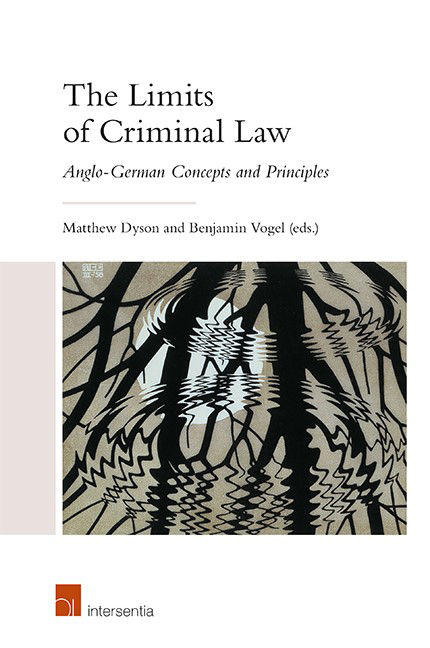Book contents
- Frontmatter
- Preface
- Contents
- List of Cases
- List of Abbreviations
- List of Contributors
- Chapter 1 Introduction
- PART I CORE PRINCIPLES OF CRIMINAL LAW
- PART II CRIME AND TORT
- PART III CRIME AND MEDICAL
- PART IV CRIME AND REGULATION
- PART V ADMINISTRATIVE SANCTIONS
- PART VI ALTERNATIVE ENFORCEMENT
- PART VII COUNTER-TERRORISM
- PART VIII CRIME AND INTELLIGENCE
- PART IX CONCLUSION
- Index
- About the Editors
Chapter 9 - Medicine and the Limits of Criminal Law in Germany
Published online by Cambridge University Press: 11 February 2021
- Frontmatter
- Preface
- Contents
- List of Cases
- List of Abbreviations
- List of Contributors
- Chapter 1 Introduction
- PART I CORE PRINCIPLES OF CRIMINAL LAW
- PART II CRIME AND TORT
- PART III CRIME AND MEDICAL
- PART IV CRIME AND REGULATION
- PART V ADMINISTRATIVE SANCTIONS
- PART VI ALTERNATIVE ENFORCEMENT
- PART VII COUNTER-TERRORISM
- PART VIII CRIME AND INTELLIGENCE
- PART IX CONCLUSION
- Index
- About the Editors
Summary
OVERVIEW
INTRODUCTION
The ‘limits of criminal law’ can be understood in several ways. For the purposes of this chapter, a distinction will be made between three types of limits: (a) first, in the sense of the question as to the conditions under which it can be applied in accordance with the principle of ultima ratio or the question as to which higher-ranking normative limits it is subject to; (b) second, in the sense of its inherent, quasi-‘endogenic’ functional limits if it is applied or could be applied according to (a); and finally (c), phenomena from outside (‘exogenic’) the sphere of criminal law also warrant consideration, as they limit its application (in certain areas), for example practical limits on its applicability in cases that – typically – cannot be resolved or that can only be resolved by disproportionate means. In the following, my remarks will focus primarily on the function of criminal law and its limits in the field of medicine. An overview of those areas of medicine that, from a German perspective, are especially receptive to regulation by the criminal law (1.2) is followed by the closer inspection of questions of consent and medical malpractice and their central importance to the physician–patient relationship in many areas of treatment (2). Finally, selected features of the role of criminal law in connection with euthanasia (3) and – in the areas of abortion and sterilisation – in the context of the control of medical activities by way of procedural regulations (4) will be discussed.
AREAS OF MEDICAL LAW: SOME EXAMPLES
Medicine is a highly diverse field, and as a result, medical law, too, is remarkably broad in scope. Criminal law is just one of many legal options in this area, and only rarely is it the only option that applies. Most cases involve the performance of (or failure to perform) curative treatment. From the point of view of (German) criminal law, this raises the question, on the one hand, as to the conditions under which the performance of a medical procedure is legitimate (see 2.1 and 2.2 below); on the other hand, it also gives rise to the question of criminal responsibility for mistakes made during the performance of medical procedures that are, in fact, legitimate (medical malpractice, see 2.3 below).
- Type
- Chapter
- Information
- The Limits of Criminal LawAnglo-German Concepts and Principles, pp. 173 - 194Publisher: IntersentiaPrint publication year: 2020

